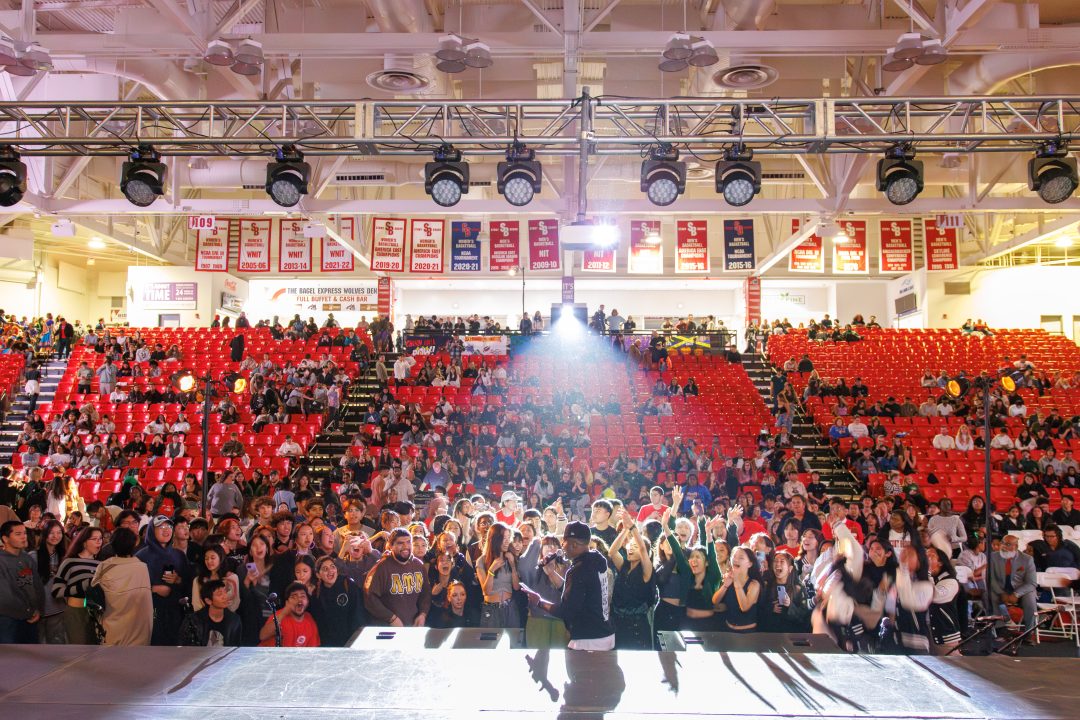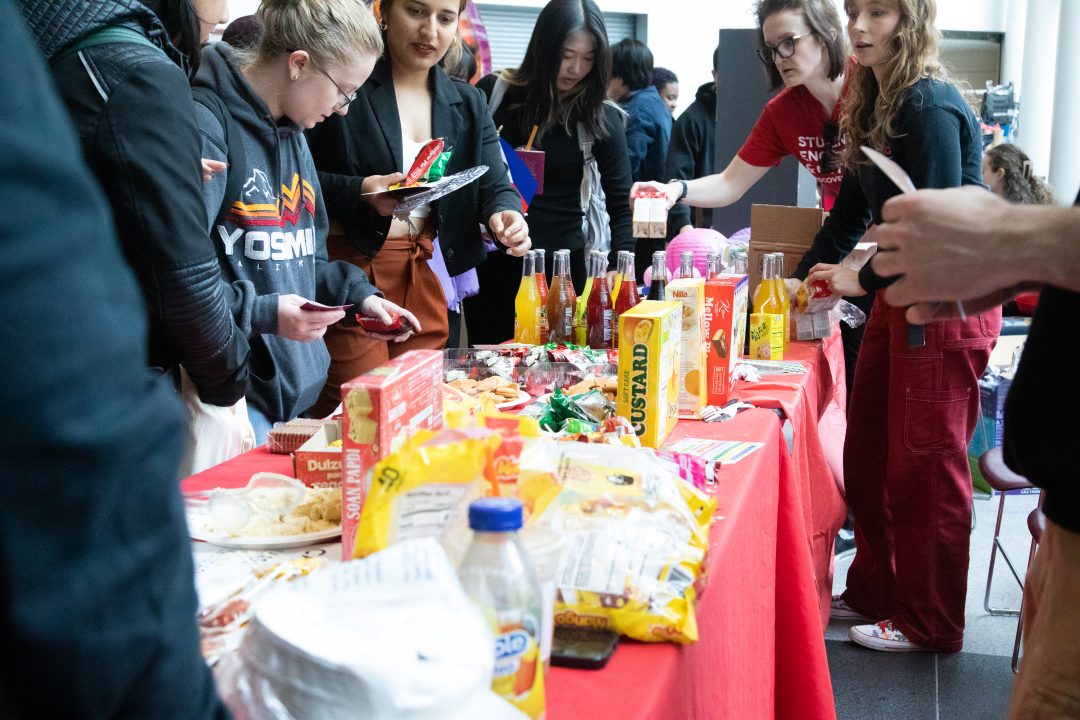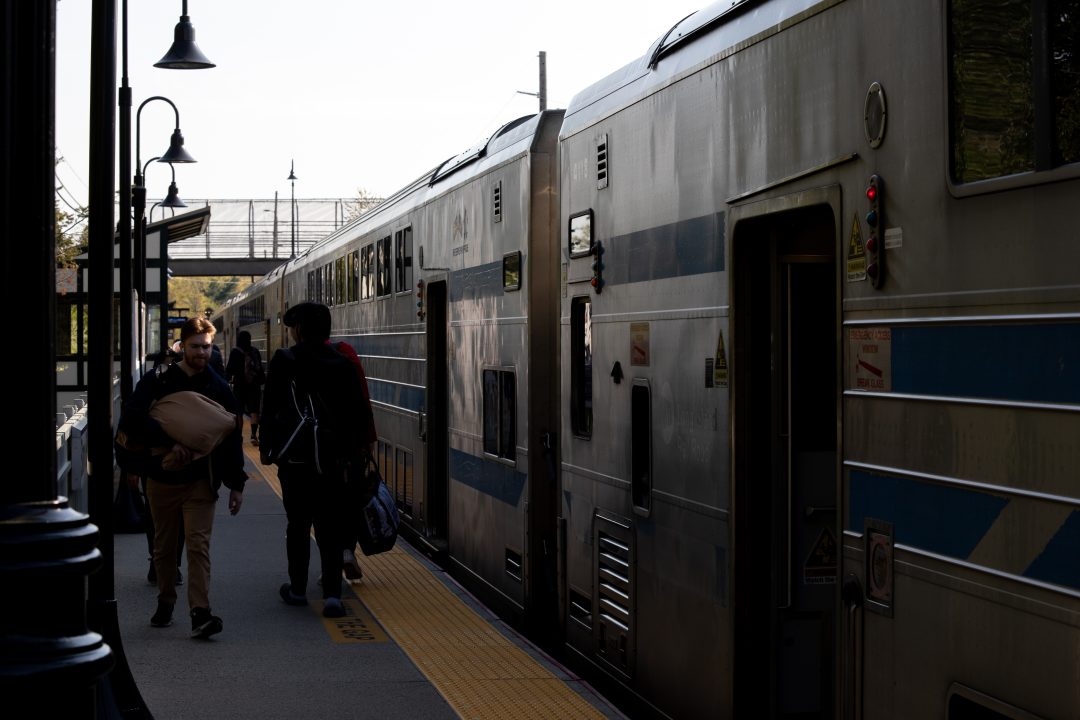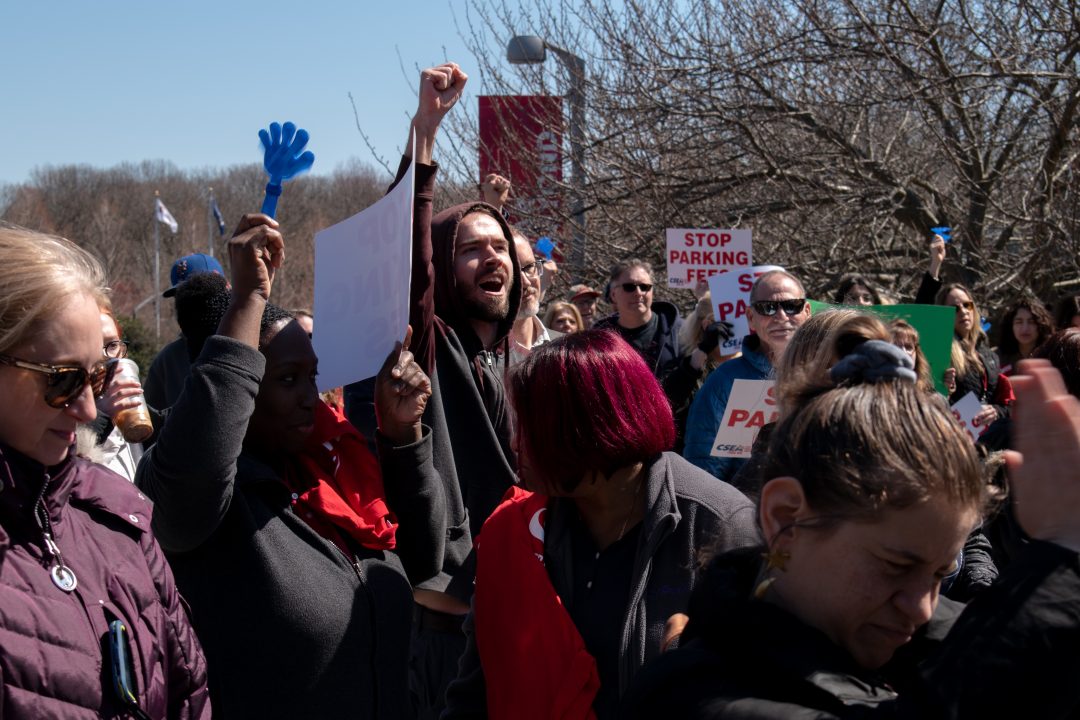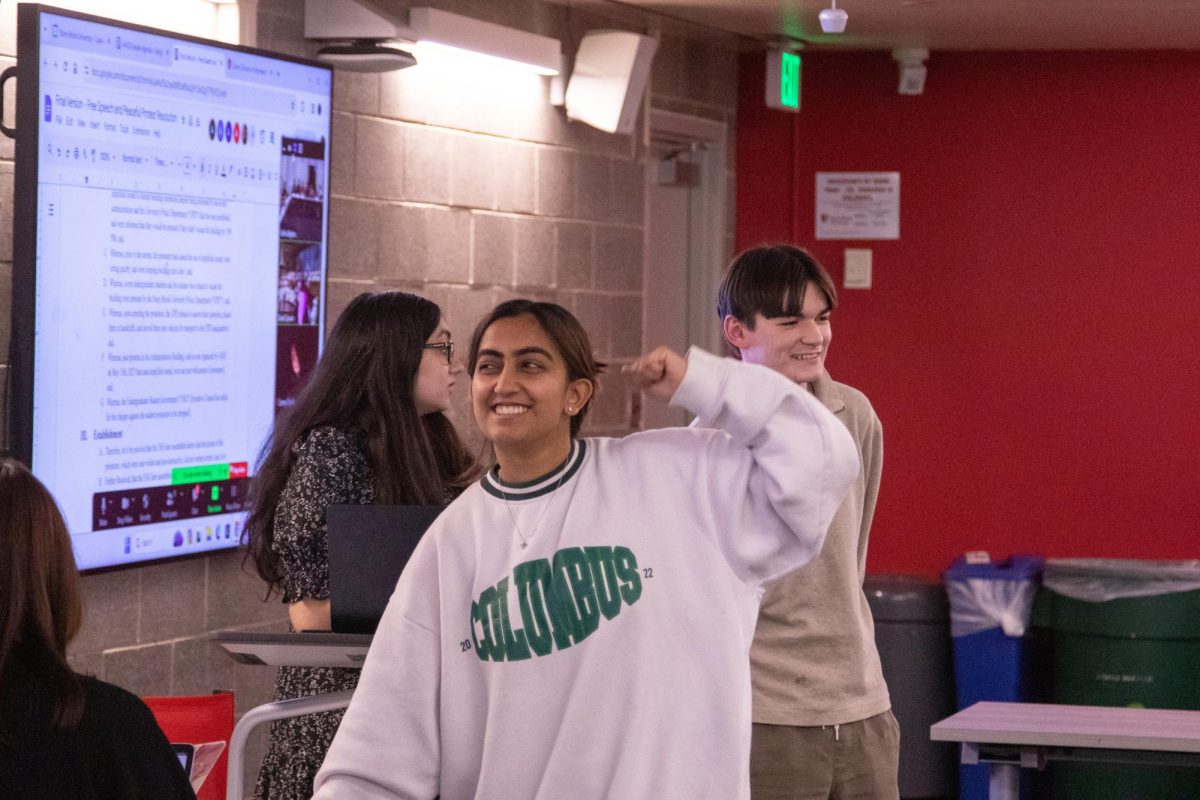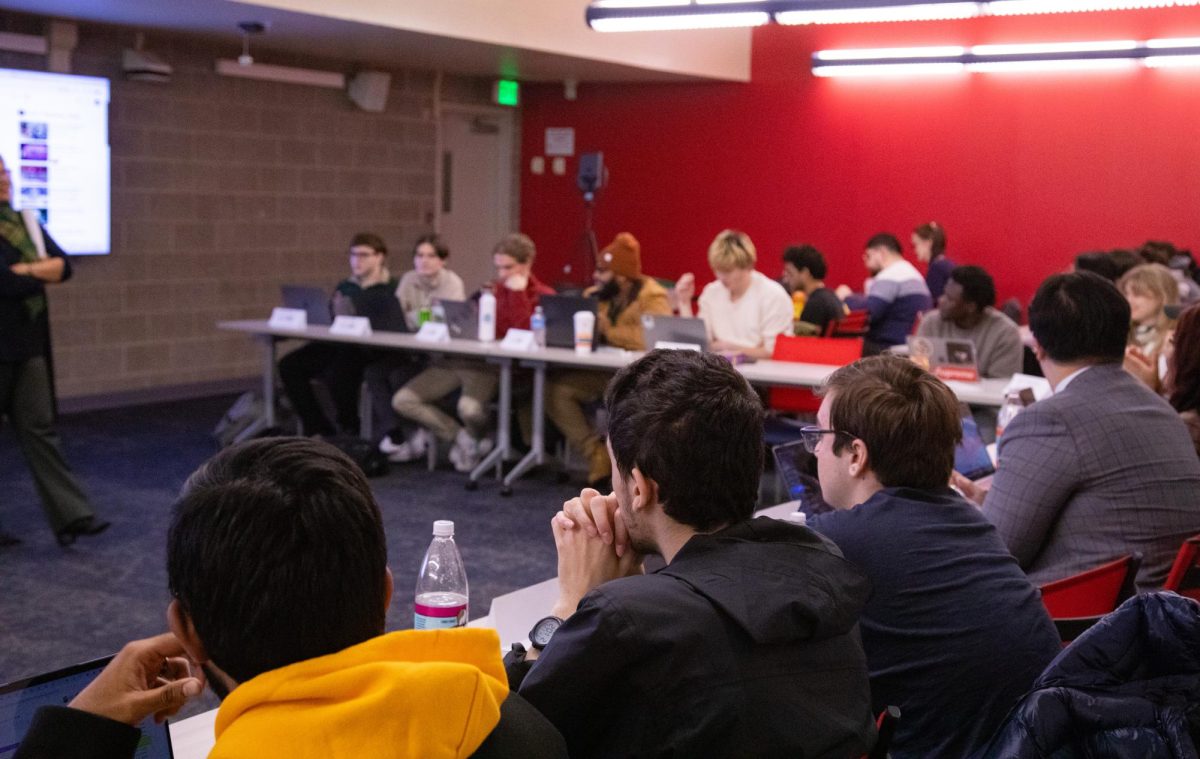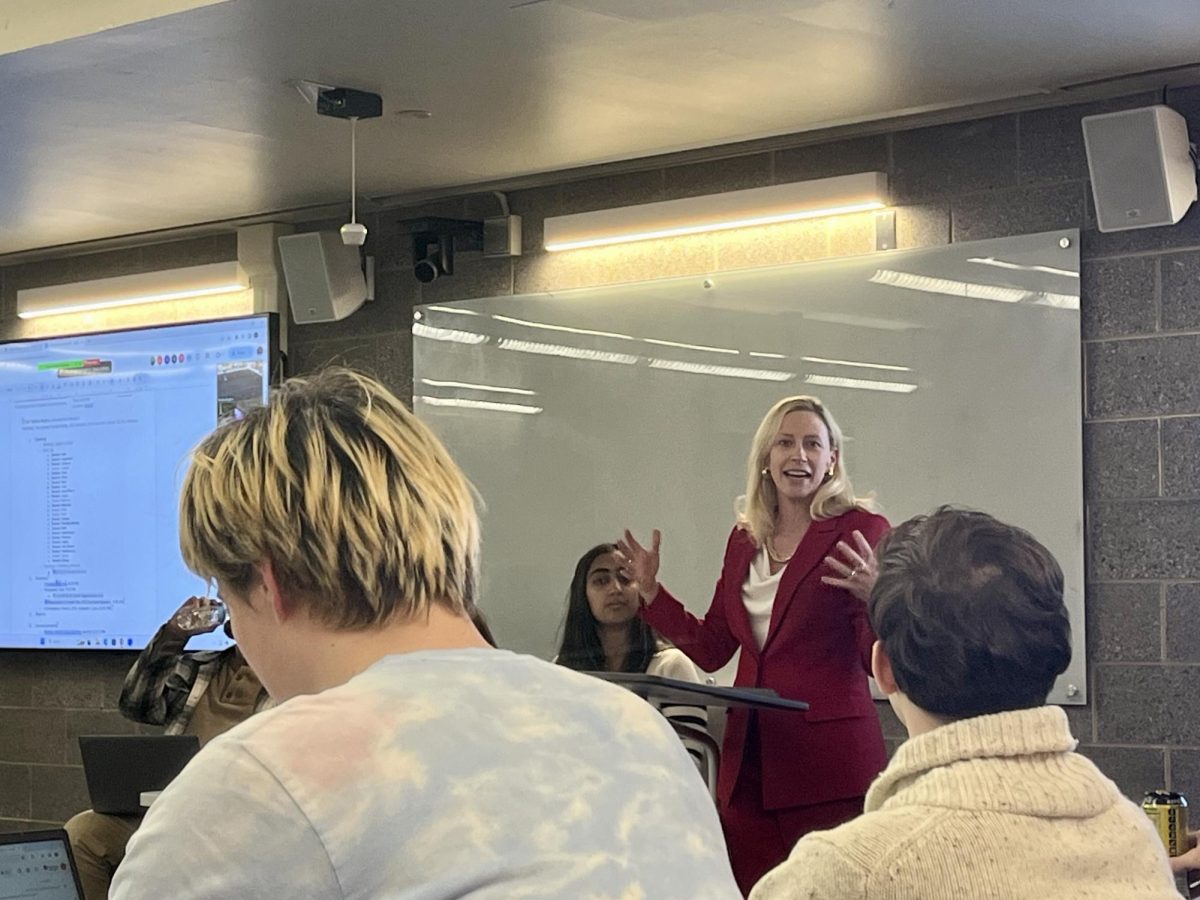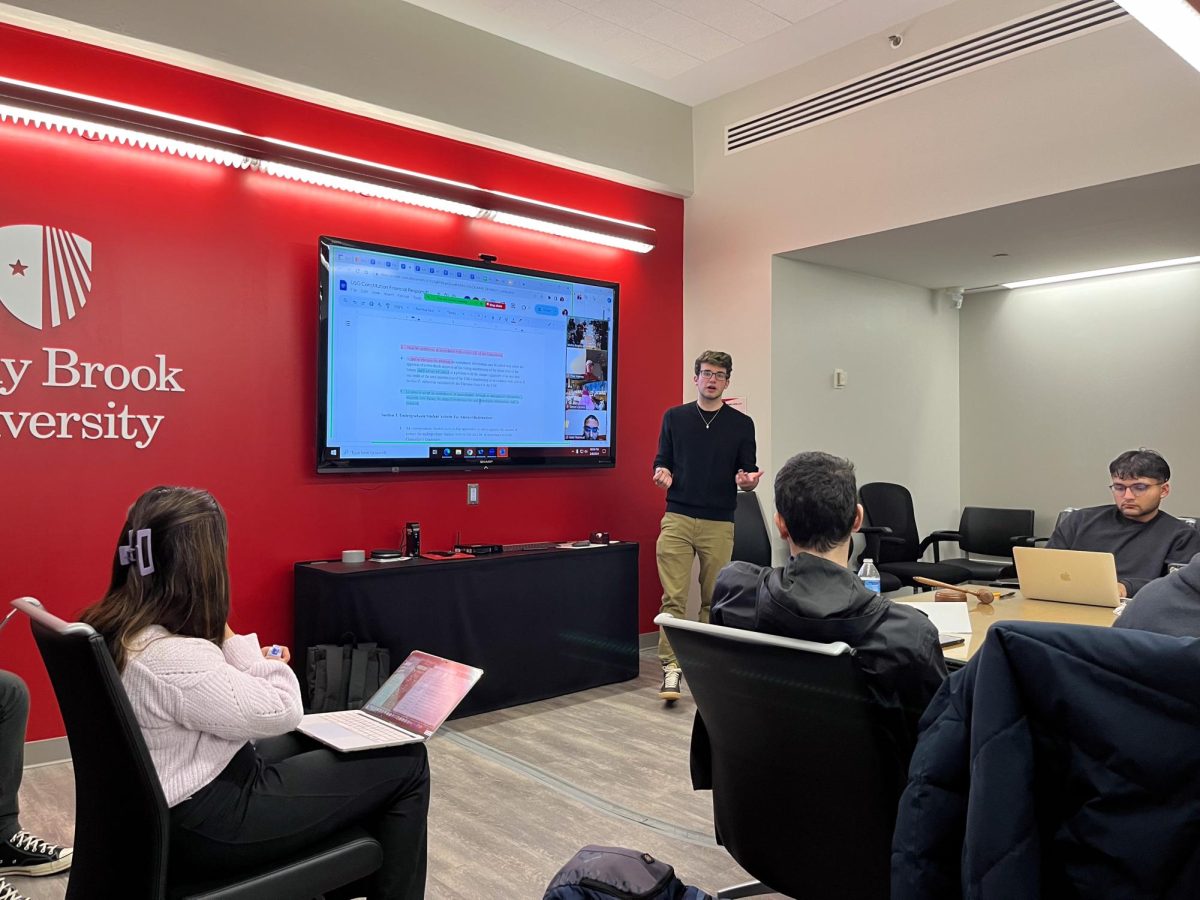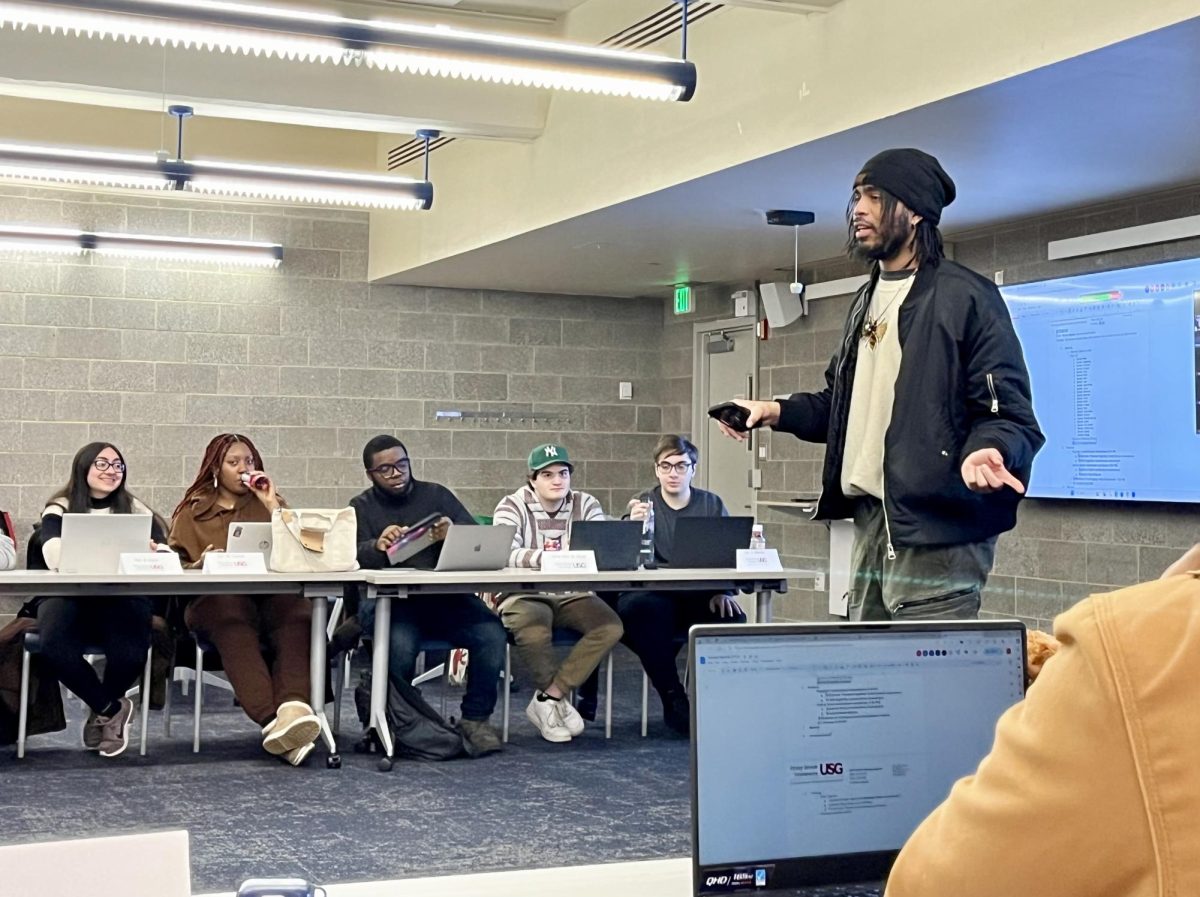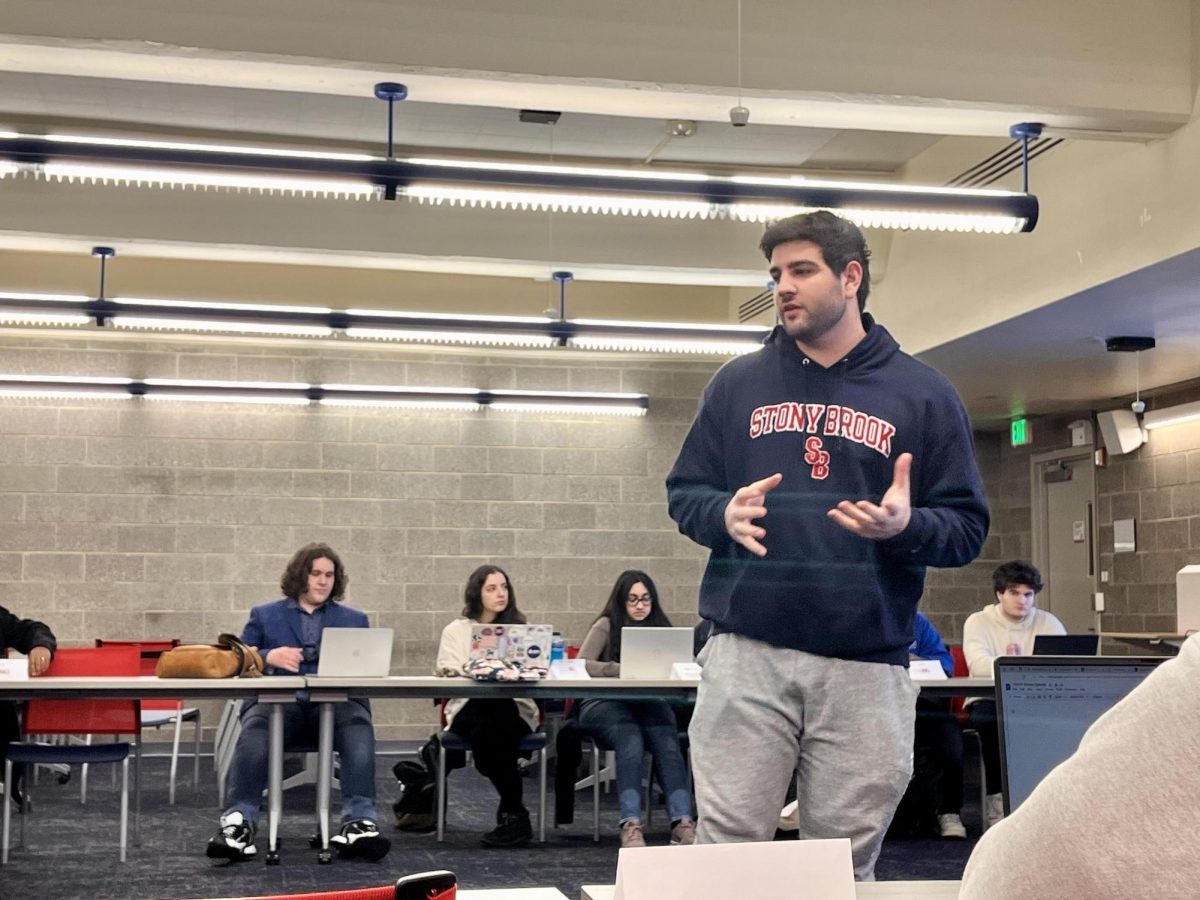
By Alek Lewis and Fanni Frankl
At the crack of dawn on Thursday morning, at least 24 Stony Brook University students and two Statesman reporters boarded buses to Albany.
The goal was to participate in Higher Education Action day, where representatives from State University of New York (SUNY) and City University of New York (CUNY) schools meet with government officials to discuss how to improve funding for higher education in New York.
“I feel like it’s a really good opportunity to figure out what I can do and my role in government,” Audrey Roosevelt, a junior biology major, said on the bus.
She works at the Stony Brook Center for Prevention and Outreach and feels there needs to be more funding for mental health services on campus.
“New York State needs to focus on the mental health wellbeing of its students,” she said.
Shaheer Khan, Undergraduate Student Government (USG) president and senior political science major, said an event like this puts college students at the forefront of the legislative process by allowing them to personally speak with the senators and legislators who draft the budget for the SUNY system.
He previously testified at an NYS Senate Higher Education Committee meeting at Nassau County Community College in November to advocate for many of the issues he planned to bring up in Albany, such as outdated infrastructure; increased funding for mental health services and counseling; and mitigating student financial concerns.
“We should be holding our state legislators and state senators accountable for their decisions,” he said. “But more so, we have to guide them and help them understand what are some of our concerns.”
He also voiced concern at the dichotomy between Stony Brook University’s reputation and its technological resources available to students. He pointed to problems with wifi and the inaccessibility of charging ports in classrooms.
“I think campus maintenance funding, especially for Stony Brook is important,” Khan said. “We are a global name but I question how can we stand out in the global market if the technology we use at our campus isn’t up to date?”
The bus was paid for by the SUNY Student Assembly, according to Khan. USG was prepared to bring 75 students, though only three students registered through USG besides Khan and two Statesman reporters. Twenty students registered with Stony Brook’s Educational Opportunity Program (EOP).
After a nearly 4-hour bus trip — which included students from Farmingdale State College (FSC) — the group arrived in Albany around 12 p.m., missing the opening ceremony.
The students rushed to the Capitol and Legislative buildings, making their way to meeting room six, where hundreds of participants had gathered for the event.
The total count of registered participants is estimated at over 900, SUNY Student Assembly officials said.
One Statesman reporter stuck with group two, which included EOP members, the United University Professions higher education union (UUP), and some of the students who registered with USG. The other reporter stuck with group one, which included the rest of the USG students and students from FSC.
Most of the members of group two were abandoned at the security line by their group leader, SUNY Associate for Opportunity Programs, Evonne Hamlet-Cadet, who cut the line in an attempt to get a select few members, including junior political science and economics major, Malachai Maloney and junior hispanic literature and language major Hope Biersach, to their 12:30 p.m. meeting on time.
The rest of group two wandered around the Capitol, frustrated and lost, until they found their way to Assemblyman Michael LiPetri’s office for their 1:00 p.m. appointment without a guide.
Group one members arrived late to all of their meetings, half-hour sessions with legislative directors scattered across the capitol.
In group one’s separate meetings with State Assemblyman Steven H. Stern’s (D) and Charles D. Lavine’s (D) legislative directors, students addressed topics including eligibility requirements for the Excelsior Scholarship and funding needed for resources like textbooks.
Students argued that Excelsior should be made more flexible by increasing the income threshold and reforming the mandatory requirement of 30 credits a year, which may be too rigorous for many students. They also emphasized the importance of funding for community colleges, which provide the foundation for many students’ college experience.
In a 12:30 p.m. meeting with one of the staffers for District 2 State Sen. John Flanagan (R), which a Statesman reporter was unable to attend, Maloney recalled that the staffer was “receptive” to the needs and concerns of the students and called the Excelsior Scholarship “a mess.”
Students also discussed the possibility of eliminating standardized testing like the New York State Regents with State Sen. Flanagan’s staffer, Biersach said.
In the 1:00 p.m. meeting with a staffer for Assemblyman Michael LiPetri, Stony Brook EOP students made a passionate case to allocate funds for student financial relief by telling stories of their struggles paying for their higher education.
“It’s really great that you guys all come in, it really reminds us what’s important,” LiPetri’s staffer said in the meeting. “It catches us up to date on what’s on the mind of the public.”
In a meeting with State Sen. James F. Gaughran’s (D) legislative director, students complained that they did not see tuition increases reflected in the quality of their education.
“We have all of this potential and we have all of the great minds and the only thing stopping us is our institution,” Maloney said, referring to his student debt. “If I am taking on all of this stress and debt — and I am not getting anything to return that investment — it feels like I was tricked.”
Students at the Gaughran’s meeting also brought up the fact that a majority of the meetings were not with the legislators individually, but with their subordinates, who took notes to relay back to them. Some students were not happy with the legislator’s absence.
“You have a superior who we would like to speak to,” Maloney said. “The fact that we can’t even have the respect to be heard [by them], it just seems like this whole ordeal is disingenuous.”
One student added that although she was thankful that students were being heard, legislators are “not putting the names and faces together” due to not being physically present in the meetings.
Nevertheless, legislative staff members were actively observant, listened to students’ concerns and empathized with their situations.
“The one big thing that I appreciate about this is that you sat here and you listened,” Jahad Goyte, aeronautical science from and FSC Student Government Association president, said. “That speaks wonders because a lot of people nowadays just like to talk. It’s all about listening.”
After the event, Solomon reflected on his experience and pessimism at the students’ impact on the legislators, doubting that relevant and noticeable budget allocations are going to be accomplished. The influx of student attendance, however, gave him a “glimmer of hope” that the legislators may take into account when drafting the new budget.
“It seems like we get a lot of lip service especially when it comes to our government and education,” Maloney said. “We are sick of politicians telling us one thing and then not following through … We have seen you fail time and time again.”
Although she valued the opportunity to communicate with legislators, Biersach said that she “expected [the event] to be more organized” and that “everything was sort of rushed.”
Khan was more optimistic about student influence in Albany. He hopes to follow up via email to Sen. Gaughran’s legislative director, who he felt was the most receptive. He said he was satisfied with the event and believed it may influence legislators’ future agendas.
“I think the students who came with us today made a more unified approach because we see that the issues that Stony Brook University faces are not just Stony Brook problems — it’s a SUNY and CUNY problem,” he said. “We were very successful in addressing our problems and coming up with potential solutions. I would like to see it reflected in the final budget, so we are hoping for the best.”











